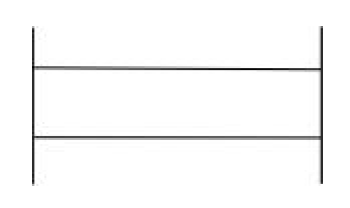
Prologue
Comparative Preschool Study:
High and Low Socioeconomic Preschoolers
Learning Advanced Cognitive Skills
1964
"Comparative Preshool Study" is the daily log of the first formal educational experiment I did, back in 1964, when I started with the Institute for Research on Exceptional children at the University of Illinois. The work is a showcase of my ignorance and what the kids taught me. Basically, they taught me all the foundation skills that underpin the programs we do. Of course I thought I was pretty smart when I started the experiment and I knew that I could teach preschoolers stuff that Piaget said they couldn't learn at their stage of development.
There were two small groups of preschoolers, a group of Caucasians from a high SES side of town (really smart little guys) and a group of African Americans that were not as high in language skills.
The idea was simple, and based on something of a null hypothesis, which was: there ain't no difference between the two groups. With "careful instruction" I would be able to teach the same material to the kids in both groups. And the stuff I planned to teach would be highly unfamiliar to all of them, variations of what Piaget classified as formal operations, sophisticated patterns of reasoning that required the learner to formulate "propositions about propositions."
So kids (3-5 year olds) learned to analyze different problems that could not be solved without applying a rule and without receiving information that would eliminate one of the possibilities. For instance, the kids would be taught the rule that there are two ways to make one end of a teeter-totter go down. You could push down on that side (from the top surface) or pull up from the other side. Kids also learned a rule that if you touch wet paint, you'll get paint on your hand. And if you have paint on your hands, you must have touched wet paint.
The final test of the training (referred to as the criterion problem) was to see if the children could combine information about the rules and figure out how a change in the teeter-totter's orientation occurred. For this problem, children received information that the top surface of the teeter-totter had wet paint on it. Children were told that the guy who made the teeter totter move got paint on his hand (or did not get paint on his hand). Then they conclude what he did.
The program was designed so the kids worked with setups that were logically the same as the teeter-totter. One was a bar that went through a wall. The bar could be pushed in or pulled out. It is like the teeter-totter in that if the position of the bar changes, the guy who changed it could have pulled out on that side or pushed in on the other side.
The most abstract variation that children learned was the "double H model," two vertical lines enclosing two horizontal lines.

The rule for making a horizontal line longer than the other horizontal line is that you can either make that line longer, or make the other horizontal line shorter. The kids in the low-SES group plugged along. The kids in the other group absolutely took off and learned new skills at a remarkable rate. Once they caught on to the patterns, they would learn things in about an hour that Piaget said couldn't be taught before the age of formal operations—around 11 or 12 years old. An example is relative direction (A is north of B but south of C). They learned it in about an hour. Paths of light entering and leaving a mirror are another example (the angle of incidence is equal to the angle of reflection). For these problems, the children would see a diagram like a floor plan of a room with a mirror on one wall. A person would be shown in different positions, to the left of the mirror, to the right of the mirror, in front of the mirror. Children had to figure out where they would have to stand to see the person in the mirror. It took about an hour to teach this application and a bunch of parallel ones, such as rolling a ball at an angle to the wall. Children showed the path the ball would take after contacting the wall. Another application involved bouncing a ball so that it strikes the floor at an angle. Children had to show the path it would take when it bounced up from the floor.
So every day during the summer of 1964 I worked first with the group in a nursery school in the poor part of town and then the other in a sedate church. While everything was fresh in my mind, I went back to the institute, banged out the log entries for that day (on my 1935 Underwood), listing what we worked on and the kids' progress.
The null hypothesis was soundly refuted. At the end of the experiment the advantaged group was far ahead of the African American group. It wasn't just that they learned faster. They caught on to the various games that we played and would generalize to new setups and applications. They were flat awesome, including one little three year old, Eran, who got sort of left behind by the others in the group near the end of the experiment. The African Americans ended up learning some of the logic patterns and passing the criterion-referenced test at the end of the study, but because I attempted to teach to mastery, the more advantaged kids learned quite a bit a more during the same period of time.
So the study clearly showed that the African American kids had a language deficit that was not recognized by the field until Hart and Risley came out with their work, Meaningful Differences in the Everyday Experience of Young American Children. We were labeled racists and bigots who were insensitive to "Black English" or did not understand that the setting was intimidating for the African American children, etc.
I never tried to have the log published, but every time I read one of those denials of a language deficit I cringe. I would love to be able to have those romantics observe the two groups learn unfamiliar material and then try to apply their slogans about where the teaching should start if it is tailored to children’s needs.
If you read the log, you have to wade through some esoteric discussions about Piaget, because the goal was to discredit his orientation to learning and development. Of course the study did not have a sufficient number of subjects to qualify for serious "statistical analysis" but it shows all kinds of things that the field is just now beginning to have a modest understanding of—motivation, the problems with rote learning, the strength of teaching rules, the relationship of rote to concrete applications, the proper placement of children in a program, and possibly most important, comprehension. Much is written about "reading comprehension," but it is not reading comprehension. It is language comprehension. And also, it is not simply vocabulary; it is reasoning and applying descriptions of things to specific, concrete material. And these will not be taught with the casuistic procedures that are reflected in the current recommendations. Isabelle Beck had trouble teaching kids less than two dozen words in a school year and she had the temerity to write a book on vocabulary.
In my estimation, the log is a very important study. And anybody who is seriously interested in learning and comprehension should read and attend to the details of the kids' day-by-day progress (and hopefully also that of their teacher).
As I noted above the things I learned from this experiment are reflected in everything we have written about lower-performing kids — the programs, the articles, and the books. About one month following the completion of this study, Carl Bereiter, Jean Osborn, and I launched an academic preschool for disadvantaged kids, the notorious Bereiter-Engelmann preschool. It was strongly influenced by what I had learned from this experiment. From the beginning, we had a daily language period, and we taught the concepts and applications that the at-risk kids in this preschool study didn't know — if-then reasoning, the meaning of words like and, or, under, between, on, in, and other details of the language of instruction.
It all started with this study. The bad news is that when I read the ways I did some things in this study, I cringe and wonder how I could have been so dumb. The good news is that in the end, I was less dumb because of what the kids taught me.
Featured Video
Kindergarteners Showing Off Their Math Skills 1966 Uncut demonstration of at-risk children who were taught math by Zig Engelmann as four year olds and five year olds. The session was filmed in front of a class of college students in August with no rehearsal. Children work addition, subtraction, multiplication, division problems, basic algebra problems, fraction problems, area problems, factoring, and simple simultaneous equations.

